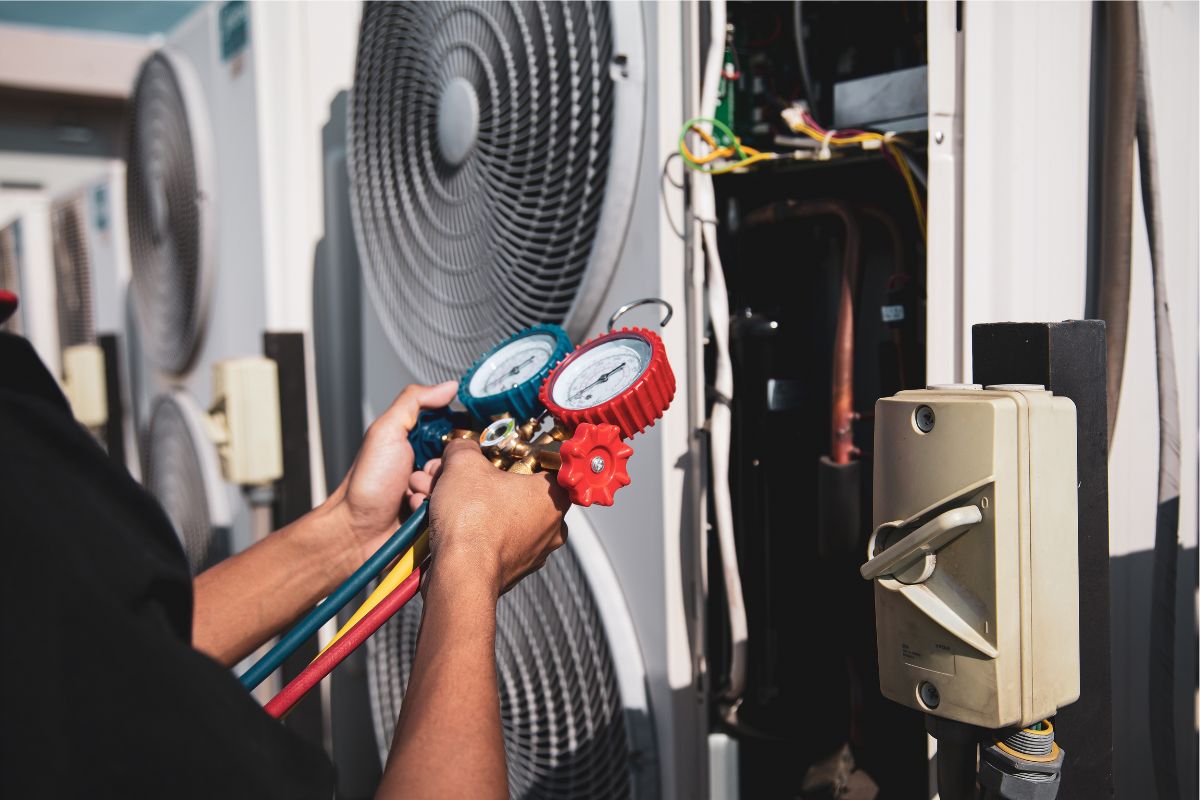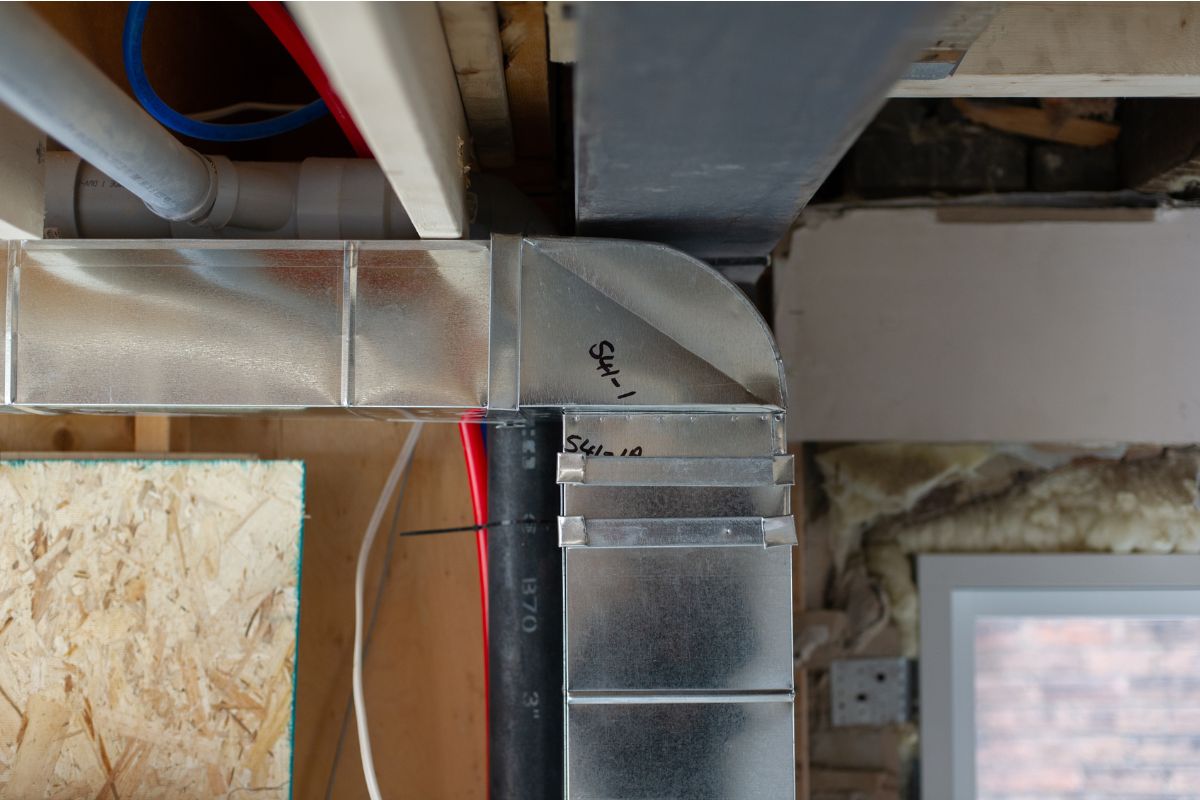As a restaurant owner in New York City, having the right HVAC system is essential to keeping your guests comfortable and providing an atmosphere where they can truly appreciate their dining experience. Not only does the ideal HVAC system maintain friendly temperatures indoors, but it also helps improve air quality so that no unwanted odors or allergens accompany the food. But restaurant owners who are unfamiliar with HVAC systems may be overwhelmed by all of their options. In this blog post, we will explore what NYC eateries need to know about restaurant HVAC systems to find one that meets their specific needs and goals!
The Benefits of Having an HVAC System in a Restaurant

Operating a successful restaurant in New York City involves a number of challenges, and one of them is keeping patrons comfortable regardless of the season. This is where an HVAC (heating, ventilation, and air conditioning) system comes in handy.
From ensuring comfortable temperatures for diners and kitchen staff to maintaining healthy indoor air quality, an HVAC system can provide numerous benefits for any restaurant. By investing in a state-of-the-art HVAC system, restaurant owners can create a relaxing and enjoyable dining experience for their customers, while also ensuring optimum air quality that contributes to the overall health and well-being of everyone in the restaurant.
Additionally, an efficient HVAC system saves energy and reduces energy costs, a substantial benefit for restaurants looking to save on overheads.
The Different Types of HVAC Systems Available for Restaurants in NYC
When it comes to HVAC systems for restaurants in New York City, there are a variety of options available to cater to different types of businesses. From simple rooftop units to complex VRF (Variable Refrigerant Flow) systems, each type of HVAC system has its own advantages and disadvantages. Rooftop units are the go-to option for smaller restaurants looking for a cost-effective solution.
Meanwhile, VRF systems are ideal for larger spaces, as they offer individual temperature control for each area of the restaurant and are energy-efficient. Ductless mini-split systems are a popular choice for smaller spaces too, as they can be installed discretely and offer zone heating and cooling. Restaurant owners may also opt for either single-split systems or multi-split systems, too.
Single-Split System
Single-split systems are popular among NYC restaurant owners due to their ease of installation, low cost, and energy efficiency. These systems consist of a single outdoor unit that is connected to multiple indoor units through refrigerant piping and electrical wiring. Furthermore, these systems allow for customizable temperature control in different areas of the restaurant, making it easier to maintain a comfortable and consistent environment for both customers and employees. Another advantage of single-split systems is their compact size, which makes them ideal for small restaurants with limited space. They also have low noise levels compared to other types of HVAC systems, ensuring a peaceful dining experience for customers.
Single-split systems, however, may not be suitable for larger restaurants with multiple floors or extensive seating areas. In these cases, a multi-split or central HVAC system may be a better option.
Multi-Split System
One of the main advantages of multi-split systems is their ability to provide zone cooling. This means that different areas or zones within a restaurant can be cooled individually, allowing for more control over the temperature in each space. This is particularly beneficial for NYC restaurants, where different areas may have varying cooling needs due to factors such as kitchen equipment, large windows, or high foot traffic. With multi-split systems, restaurant owners can adjust the temperature in each zone separately, ensuring optimal comfort for both customers and staff.
Another advantage of multi-split systems is their energy efficiency. These systems use advanced technology such as inverter compressors and variable-speed fans, which can adjust the cooling capacity based on the current temperature and demand. This results in significant energy savings compared to traditional air conditioning systems, which constantly run at full capacity.
Ultimately, choosing the right HVAC system for your restaurant requires taking into account factors such as your budget, restaurant size, and overall efficiency goals. With so many options available, it’s important to consult with a professional HVAC contractor to make an informed decision that will benefit your business in the long run.
How to Choose the Right HVAC System for Your Restaurant
Choosing/upgrading the right HVAC system is critical for the comfort of your customers, employees, and the longevity of your restaurant. The first step is to determine the size of your establishment and the areas where the system will be installed. A properly sized unit will ensure optimal energy efficiency and budget savings. Consider the specific needs of your restaurant, such as the type of cuisine, kitchen equipment, and dining areas.
A properly functioning HVAC system will maintain a consistent temperature, humidity, and air quality, preventing food spoilage, mold, and unpleasant odors. Look for systems with features such as air filtration, smart thermostats, and humidity control. Ensure that the system is installed according to local regulations and codes to prevent any safety hazards.
Don’t forget about regular maintenance and servicing, as a neglected system can result in costly repairs and even closure of your business. By taking the time to choose the right HVAC system, you’ll ensure a comfortable and healthy environment for both your customers and staff.
Common Issues with Restaurant HVAC Systems and How to Fix Them
Restaurant HVAC systems are essential for keeping customers and employees comfortable while dining or working. However, these systems can also pose common issues that can result in reduced efficiency and costly repairs.
One of the most frequent problems is inadequate ventilation or air circulation, which can lead to poor air quality and musty odors. Another common issue is thermostat malfunction, causing inconsistent temperature control and subsequent discomfort for customers and staff alike. Moreover, this also potentially poses a risk to food in the kitchen. To address these concerns, restaurant owners and managers should consider regular maintenance and inspections of their HVAC systems, including cleaning and filter replacement.
Additionally, it’s essential to invest in high-quality equipment and consult with HVAC professionals for system upgrades or repairs. Taking these preventative measures can lead to a more comfortable, healthier environment for diners and employees, ultimately improving overall dining experiences and business success.
Maintaining Your Restaurant’s HVAC System and Why It Matters
Maintaining your restaurant’s HVAC system is crucial for its success. An HVAC system that is not functioning properly can lead to inconsistent temperatures and increased energy bills, both of which can negatively affect the bottom line.
When your customers step through the doors of your restaurant, they should be greeted by a comfortable and inviting atmosphere that encourages them to stay and enjoy their meal. By maintaining your HVAC system regularly, you can avoid costly repairs down the line and extend the lifespan of your equipment.
Dirty filters and clogged air ducts can also negatively affect the indoor air quality of your restaurant, leading to health and safety concerns for your customers and employees. Make sure to schedule routine maintenance and hire experienced professionals to inspect and service your HVAC system regularly. Trust us, it’s worth the investment.
Tips for Saving Money on Your Restaurant’s HVAC System
Restaurant owners know how essential a well-functioning HVAC system is for their business. However, with frequent use, it can also be one of the most significant expenses. Fortunately, there are various ways to save money on your restaurant’s HVAC system without compromising comfort and air quality.
One of the most cost-effective methods is to schedule regular maintenance. Regular servicing can detect small issues and prevent them from growing into more significant problems, which can be more expensive to fix. Additionally, investing in programmable thermostats can increase efficiency and save money in the long-term. Insulating the HVAC ducts and resealing your restaurant’s windows and doors can also help the system run more efficiently and reduce energy costs.
With these tips, you can save on your restaurant’s HVAC system expenses without sacrificing the comfort and satisfaction of your customers.
Remediating Restaurant HVAC Issues with Air Ideal
Having an HVAC system is essential for any restaurant as it keeps a consistent temperature to ensure customer comfort and optimal air quality. When choosing the right HVAC system, you must consider factors such as budget, size of the building, and climate control preferences.
Regular maintenance should be done on your restaurant’s HVAC system in order to avoid any major issues that can be costly. Taking the necessary steps in advance allows restaurants to save money in the long run.
If your restaurant is experiencing issues with its existing HVAC systems, fear not — Air Ideal is here to help. Our team will assist you with selecting the best system and provide ongoing maintenance for all of your needs. Please visit our website and contact us today for tailored advice based on all your restaurant’s needs.



